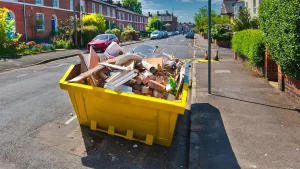Wire ropes are intricate machines composed of many moving parts, and they require regular lubrication to prevent excessive wear and failure. As per experts like Viper Wrl, because they operate in demanding environments filled with contaminants, specialized seals are used to keep wire rope lubrication seals in and dirt out of wire rope systems. These seals are crucial components that serve a variety of functions:
Read More: How To Get An Affordable Skip Bin Hire For A Tattoo Shop?
Retaining Grease for Interior Lubrication
On large cable assemblies like those used in elevators and mine shaft hoists, it’s impossible for external lubricants to reach the interior strands. Grease fittings allow grease guns to inject lubricants inside the core. Seals fitted over the grease nipples then help retain the grease between lubrication cycles and keep out moisture or particles. This ensures all internal surfaces remain properly lubricated.
Locking Out Contaminants
While exterior wire rope coatings protect against some environmental exposure, abrasive dust, water and chemicals will inevitably work their way toward cable interiors without barriers in place. Robust seals constructed from rubber, plastic or leather block contaminants and preserve interior lubrication quality longer. Some feature a “labyrinth” design with multiple lips to force debris into a maze-like path away from lubricated areas.
Protecting Connection Hardware
Wire rope terminals, fittings and anchors are also vulnerable points requiring protection. Corrosion from saltwater exposure or chemical contact can compromise the hardware integrity and introduce weak points of failure. Seals around these components safeguard critical connection joints and keep optimal lubrication levels in the most vulnerable areas even under harsh conditions.
Wear Sleeve Compatibility
Where wire ropes bend and shear across pulleys or through roller guides, plastic wear sleeve fittings are often installed to reduce friction heating and abrupt metal-on-metal impacts as cables flex. Compatible lubrication seals on either side maintain grease inside the sleeve cavity and augment the sleeve’s smoothing effects. This synergy between components enhances cable life dramatically.
Facilitating Periodic Lubrication
Wire ropes operating on pulley systems or bend limiters require periodic lubrication for proper functionality. Seals fitted with grease zerks allow technicians easy access to replenish lubricant levels without disassembling adjacent parts. Some seals feature color-coded caps to enable visual monitoring of lub levels or previous service activity. These facilitate routine maintenance work essential for safety and uptime.
Environmental Protection
On cranes, hoists and cableways exposed to outdoor elements like blowing sand, sea spray or extreme cold, seals safeguard lubricated wire rope sections from weathering erosion and moisture intrusion alongside cable coatings. For cold climates, silicone-based seals retain flexibility and effectiveness compared to seals that grow rigid and crack in sub-zero temperatures.
Customizable, Site-Specific Solutions
With wide variability in operating environments and equipment interfaces, custom engineering is often required during new wire rope installations and maintenance overhauls. Experienced suppliers have in-house design-and-build teams to create seals tailored to unique space constraints, specialized parts from original equipment manufacturers, retrofits on legacy systems and more.
Damage Containment
When wire ropes do suffer breakage, integrated seals prevent broken metallic strands, sheared pins or detached hardware from uncontrolled whipping adjacent to the system. Debris containment protects personnel and equipment in the immediate area. It also allows easier post-incident forensic analysis.
Monitoring for Early Warnings
Advanced instrumented seals fitted with wear gauges and sensors provide data for condition monitoring programs. Subtle changes in lubricant pressure differentials, temperature profiles and vibration patterns transmitted from the cable can give early warning of potential failures. This data enables predictive maintenance.
Conclusion
Though often overlooked, purpose-built seals enable proper lubrication while blocking environmental contaminants. Their many critical functions maintain system integrity, extend service life, enable maintenance and protect assets. With customized designs and real-time monitoring capabilities, modern seals go far beyond just keeping lubricants in and dirt out. Strategic sealing is essential for harnessing the full benefits of wire rope lubrication.
More Stories
Maximizing Solar Energy A Guide to Panneau Solaire Vaud Installation
The installation of panneaux solaires à Vaud has become a priority for homeowners aiming to reduce electricity costs and embrace...
Comprehensive Guide to Installing Solar Panels in Vaud
If you’re considering a panneau solaire Vaud or planning an installation panneau solaire Vaud, understanding the benefits, processes, and financial...
Why Your Business Needs a New PPC Agency
Is your present pay-per-click (PPC) agency still the right match for your company? This is an important question to address...
How PLRDigitalProducts.net Empowers Your Online Business
What Is PLRDigitalProducts.net? PLRDigitalProducts.net is an online platform offering private label rights (PLR) content to businesses, entrepreneurs, and marketers. The...
Brighten Your Space The Benefits of a Bathroom Mirror with Light
When it comes to bathroom design, a bathroom mirror with light is more than just a practical accessory. It is...
Why a Baby Mobile is More Than Just a Nursery Decoration Essential Benefits and Tips
When preparing for a new baby, one of the most exciting parts of setting up the nursery is selecting the...


